Connectors of 3rd party data is a feature in the Microsoft Information Governance stack that uses data connectors to import and archive non-Microsoft, third-party data from social media platforms, instant messaging platforms, and document collaboration platforms, to mailboxes in your Microsoft 365 organization. By doing so this allows and organization to apply various Microsoft 365 compliance solutions to the data after it’s been imported.
Please note that:
- The data is imported inside an Exchange mailbox (which you need to create upfront)
- The maximum size for such a mailbox is 1.5 TB
- Depending on the data and features needed, you might need to attach an appropriate license to the mailbox.
Microsoft native connectors and 3rd party connectors
Within the Microsoft compliance center, Microsoft already provides several native 3rd party data connectors like LinkedIn and Twitter.
In addition Microsoft also partnered with several other organizations to provide more data connectors in other cloud services. A full overview can be found here:
An small overview of platforms these 3rd party supplies can give access to:
- Jive
- ServiceNow
- WebEx
- YouTube
- Zoom
Now this might be very useful if you as an organization are for example using Facebook or WhatsApp to communicate towards you customers, or using LinkedIn for you recruitment activities. One example I have seen in practice is an insurance company Using WhatsApp for communication. You can send over pictures of damage to your property. Now this is information that you might want to archive and apply governance to.
Depending on the solution and integration the following options are available:
- Litigation Hold
- eDiscovery
- Retention Settings
- Records Management
- Communication compliance
- Insider Risk Management
Of course be mindful that this can be applied on the data WITHIN the exchange mailbox that you are forwarding the data to. It is not like you are applying these mechanisms in the 3rd party application.
Prepare Exchange Mailbox
To have a place where we can store our content, we need to prepare an Exchange Mailbox.
To do so go to the Exchange Online Admin Center and create a new mailbox.
p.s. In this demo I am creating a mailbox in the cloud. If you have a hybrid setup, please use the procedure you have put in place to create mailboxes in a hybrid environment with hybrid identities.
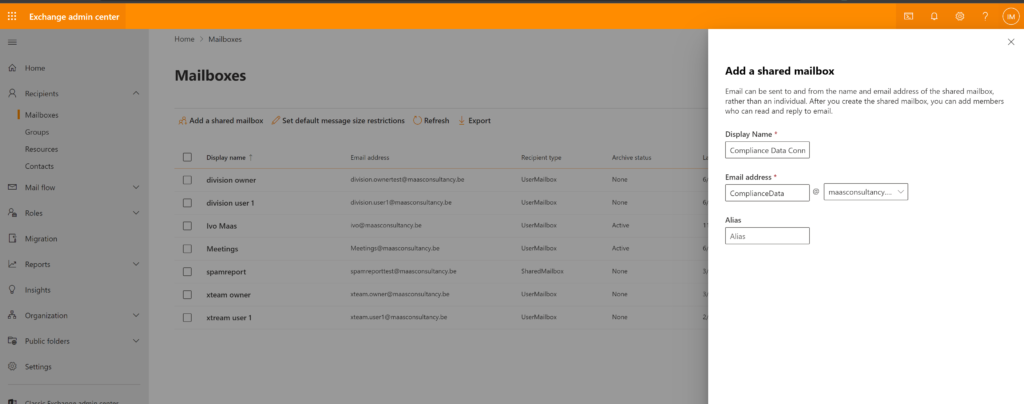
Don’t forget to assign your license to this mailbox – depending on the features you want to use!
Configuring data connectors
If you want to start with configuring data connectors, head over to the compliance center of Microsoft and select Data Connectors in the menu.
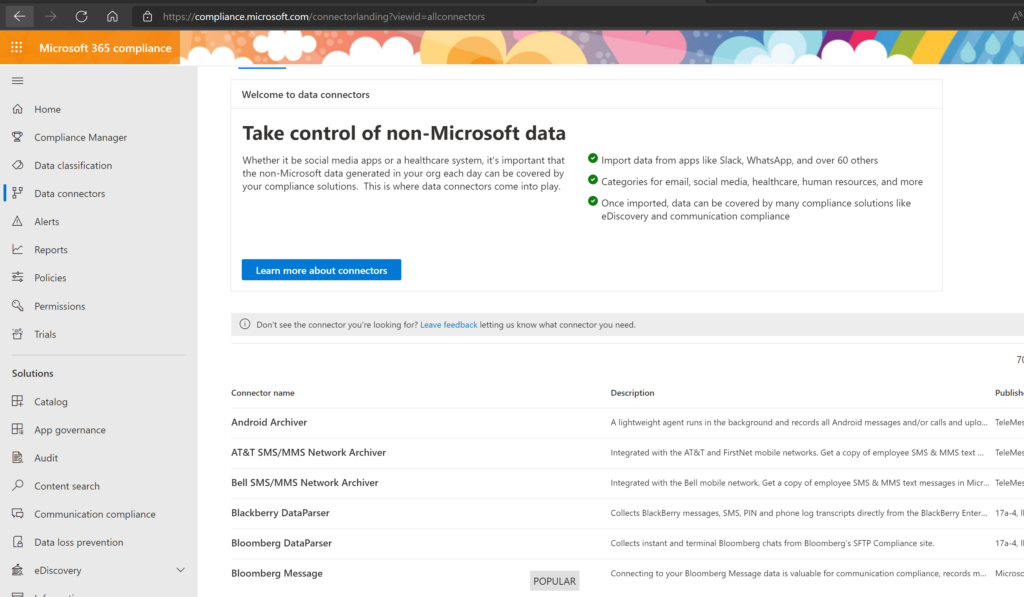
As you can see allot of integrations and connectors are already available.
Go to “My Connectors” and click on “Add a connector”.
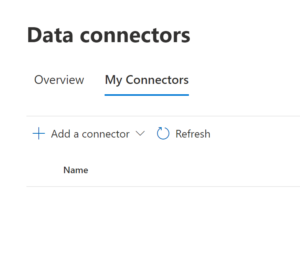
Here you can select the connector you want to add. In our example I am going to pick LinkedIn.
Next you are redirected to a Microsoft wizard. You need to accept the terms of service.
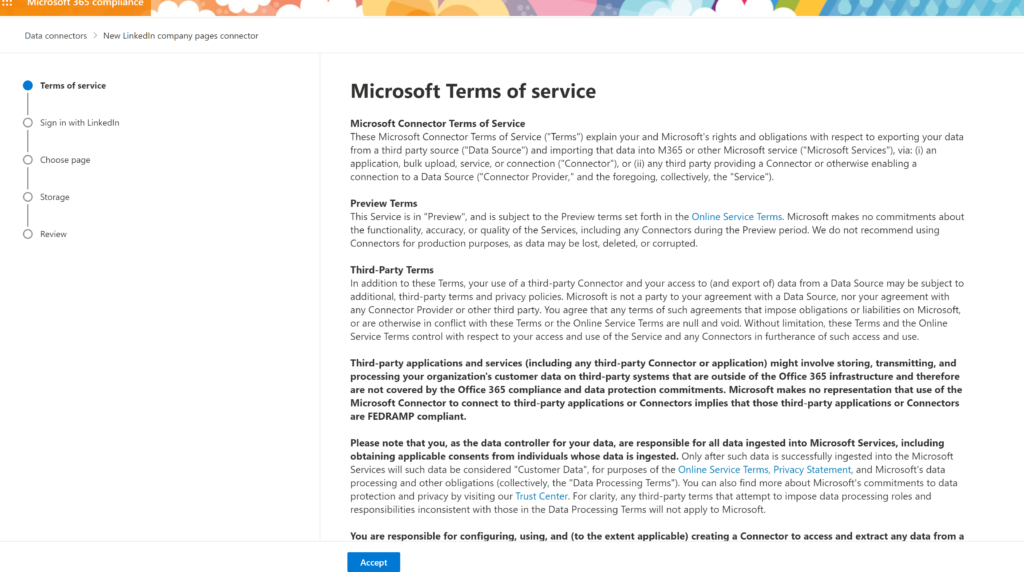
Next we need to give the connection a name and login with out LinkedIn credentials that have appropriate permissions on the LinkedIn pages.

After you have successfully logged in, you need to grant permissions to allow the Microsoft Service to access your LinkedIn accounts
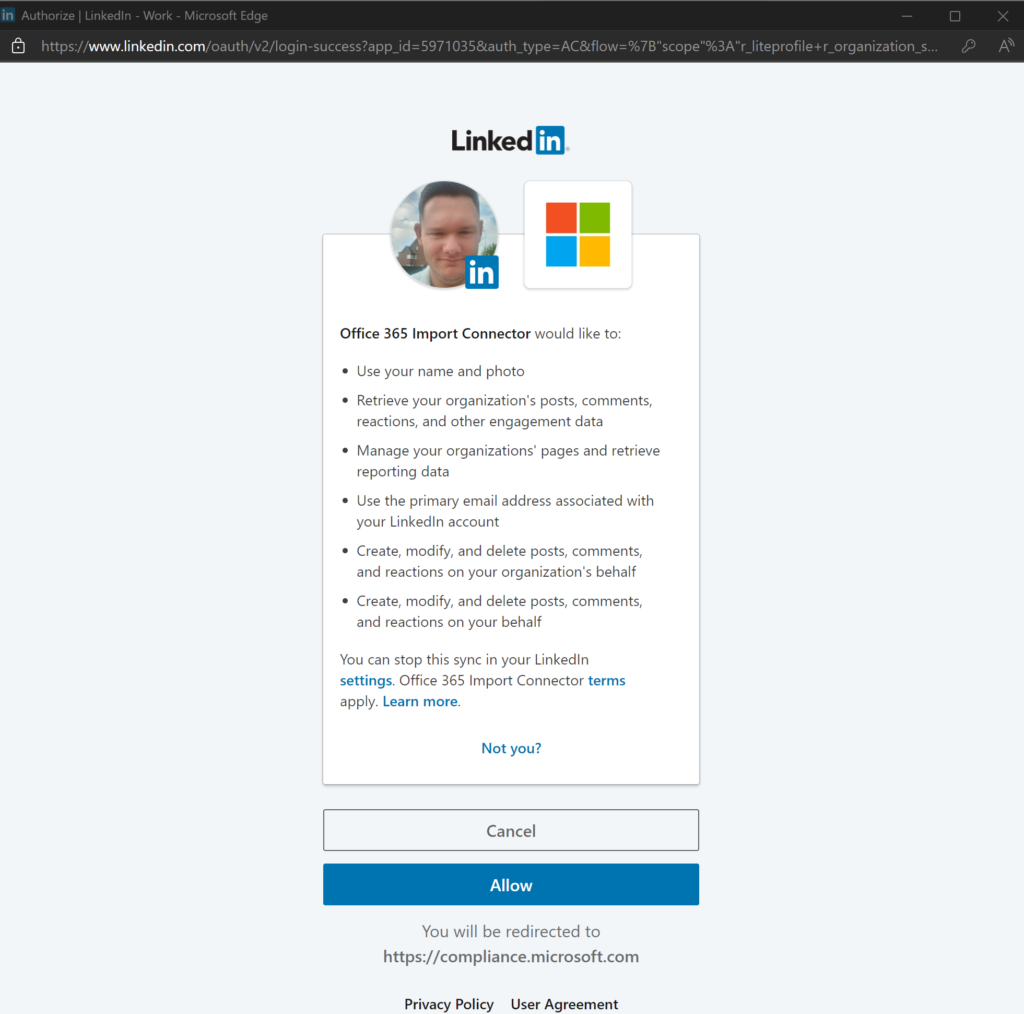
If you have multiple page’s that can be access by your account you would now need to select the page you need to archive within the Exchange Mailbox.
After that select the mailbox we created earlier to store the data in.

Accept the review and it will start creating the connector. If successful your output should be similar to the output below.

Round up
And that’s it. After a while content should be start coming into that mailbox. Now after that you can start applying litigation hold, retention hold, records management and many more on the content in the mailbox you created earlier.
